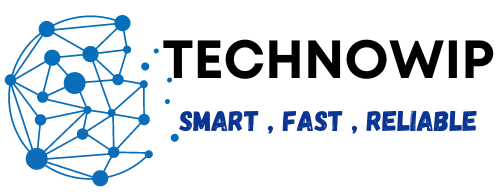Introduction
The banking industry relies heavily on predictive analytics to make strategic decisions. Big data can be used by banks to optimize operations, reduce risks and anticipate customer needs. Financial institutions that want to remain competitive need this technology, which uses machine learning algorithms and historical data in order to predict the future. This blog examines how Predictive Analytics in Banking unlocks the power of big data. It provides actionable insights and examples that illustrate its impact.

What is predictive analytics in banking?
In banking, predictive analytics involves the analysis of large amounts of data in order to predict future behavior and trends. ML, AI, and statistical modeling are some of the advanced techniques that banks use. These insights allow banks to make proactive decisions, such as forecasting customer turnover, identifying defaulters or optimising marketing campaigns.
A case study conducted by a global leader in banking demonstrated that predictive models can reduce loan defaults by up to 25% when they identify high-risk customers. The bank targeted its interventions by analyzing the credit history of customers, their income patterns and their spending habits.
Application of Predictive Analysis in Banking
In the Banking Sector, predictive analytics can be used in many ways.
Fraud Detection & Prevention
By analyzing patterns of transactions, banks can identify suspicious activities in real-time. Banks can send alerts if there are, for instance, unusual transactions in strange locations or large withdrawals. It reduces fraud.
Personalization and Customer Retention
Banks are able to offer retention strategies that target accounts most likely to close by using models of prediction. Financial products tailored to the customer’s behavior increase loyalty and satisfaction.
Credit Risk Assessment
Predictive analytics helps banks assess a borrower’s creditworthiness by analyzing their repayment history, income stability and spending habits. This reduces non-performing assets, and enhances loan portfolio quality.
Operating Efficiency
Banks can reduce their downtime by optimizing resource allocation through forecasting demand. In addition, they improve the customer experience.
What I think about Predictive Analysis
I had my doubts about the potential of predictive analytics when I encountered it for the first time in banking. I was initially skeptical about the impact of predictive analytics in banking. However, after seeing how a medium-sized bank dramatically improved its customer retention rate by analyzing churn indicator data, my opinion changed. Not only is it about the technology, but also about better understanding your customers.
How Big Data Powers Predictive Analytics
Big data is the backbone for predictive analytics, as it offers a vast amount of structured and unstructured information. In banking, data sources include:
- Transaction data: Details of all transactions, including deposits, withdrawals and payments.
- Data on customers: Demographic information, preferences and interactions.
- Trends in the industry and market data
In a case study, a European Bank found that the integration of social media data and transactional data improved their cross-selling strategies. Revenues increased by 18% in a year. For banks to maximize the benefits of data processing and collection, they must use robust systems.

Challenges in Implementing Predictive Analytics
Although predictive analytics has many advantages, it is not without its challenges.
Information Privacy Issues
Data collection and processing must adhere to regulations such as GDPR or CCPA. To maintain trust, it is important to ensure transparency and security.
Integrating Legacy Systems
Most banks still rely heavily on old systems that are not compatible with the latest analytics software, causing barriers to adoption.
High Implementation Costs
Investments are required to build predictive models and train personnel. The smaller banks might struggle with allocating resources.
Personal Reflections on Challenges
Predictive analytics is a costly tool that smaller banks are hesitant to use. I do believe that a small pilot project can show ROI and thus encourage wider adoption. The first step is to set clear objectives.
Case Study: Fraud Detection Using Predictive Analytics
To combat the increasing incidences of credit card theft, a leading U.S. Bank implemented predictive analytics. They developed an AI fraud detection system by analyzing transaction patterns, merchant information, and location data. In just six months the bank had reported a 30 percent reduction in fraud transactions. This saved millions of dollars in losses.
This example clearly shows how predictive analytics can enhance security and protect both the customer and the institution. Banks should take away the value of continuous updates and real-time processing.
Benefits of Predictive Analysis in Banking
Customer experience enhanced
Personal recommendations and proactive customer support strengthen relationships.
Improved Risk Management
Early identification of risks allows banks to protect assets and reputations by taking preventive measures.
Cost Efficiency
Over time, savings can be achieved by optimizing operations and reducing fraudulent activity.
Revenue Growth
Targeted marketing and opportunities for cross-selling boost profitability.
What I see as the role of predictive analytics in banking
Predictive analytics gives banks the ability to make solid decisions based on data, not guesswork. My friend benefited when her bank suggested consolidation of loans. She saved significant amounts on interest. These are the moments that prove its value in real life.
Future of Predictive Analysis in Banking
Real-Time Analysis
Banks are increasingly leveraging real-time data processing in order to offer instant insight, particularly for fraud detection and dynamic pricing.
AI and Machine Learning
As ML continues to develop, it will continue to offer more accurate predictions as well as adapt to customer behavior changes.
Open Banking
By integrating multiple datasets, the predictive power of data shared securely between platforms is enhanced.
The Role of AI in Predictive Analytics
Artificial intelligence increases the predictive power, as it allows models to improve and learn over time. AI-driven analysis can analyze massive datasets quicker than conventional methods and provide insights previously unavailable. This means that banks can stay ahead of market and customer trends.
Personal Thoughts on AI Integration
AI was once regarded as too futuristic in the banking industry, but its role in fraud detection has made me reconsider. My bank quickly resolved a suspicious transaction in my account after flagging it. I was amazed at how AI systems can protect us every day. These tools work behind the scenes, and it’s comforting to know that.

Steps for Banks to Implement Predictive Analytics
Define objectives
Set clear goals such as increasing customer retention and reducing defaults on loans.
Invest in Data Infrastructure
Create robust systems for collecting, processing, and securely storing large datasets.
Hiring Skilled Professionals
Hire data analysts and scientists who are able to develop predictive models.
Make sure compliance
To maintain trust with customers, adhere to the data privacy laws as well as ethical guidelines.
Watch and update models
Continue to refine your predictive models in order to adapt and improve their accuracy.
Future Outlook for Predictive Analytics in Banking
As technology improves, predictive analytics will be more prevalent in banking. The applications of predictive analytics are endless, from improving engagement with clients to driving financial integration. Banks that adopt this technology are likely to be the leaders in innovation and will provide a better customer experience.
Predictive Analytics in Banking
In banking, the predictive analytics uses real-time and historical data to forecast the future trends and events. Banks can use big data to improve their decision-making processes, predict customer demands, and optimize operational efficiency. This includes statistical algorithms, machine-learning algorithms, and artificial intelligence. This topic examines how banking strategies are transformed by predictive analytics.
Applications of Predictive Analytics in Banking
Here are some specific examples of how predictive analytics can be used to benefit banks.
- Fraud detection: Real-time identification of suspicious activity.
- Customer retention: How to increase customer retention by detecting churn indicators.
- Credit Risk Assessment (CRA): Evaluation of a borrower’s creditworthiness.
- Operational efficiency: optimizing resource allocation and service provision.
The applications show how to improve efficiency and profitability.
Benefits of Predictive Analytics for Banks
Predictive analytics has many benefits for banking.
- Personalized recommendations and enhanced services.
- Improved risk management: early identification and mitigation financial risks.
- Reduced Fraud and Operational Costs
- Increase revenue through targeted marketing and cross-selling.
The topic explores how the use of predictive analytics can drive growth and improve customer satisfaction.
Challenges in Implementing Predictive Analytics in Banking
- Adoption of predictive analytics does not come without obstacles.
- Compliant with GDPR and other regulations.
- Legacy Systems Integration: modernizing obsolete infrastructure to handle prediction tools
- Costs: high costs: large investments in technologies, professionals with skills, and other resources.
- In order to unlock the predictive analytics potential, banks need to overcome these barriers.
Case Studies on Predictive Analysis in Banking
Predictive analytics is effective when it can be applied to real-world situations. As an example:
- A U.S. Bank used predictive models to reduce fraud on credit cards by 30%.
- A European bank increased cross-selling through the integration of transactional data and social media.
The case studies below demonstrate the tangible results that can be achieved by using a data-driven strategy.
Future trends in predictive analytics for banking
The following are some of the emerging trends that will shape predictive analytics in the future:
- Get instant insights on fraud prevention, pricing and strategies.
- AI & Machine Learning Algorithms: These algorithms are capable of adapting their algorithm to the customers’ behaviour.
- Open Banking: Collaboration between financial institutions that uses shared data.
- Ethical Artificial Intelligence – Predictive models that are fair and reduce bias.
The following trends show how technology is evolving and will impact the banking industry.
Impact of Predictive Analytics on Customer Experience in Banking
The banks use a variety of datasets for building predictive models.
- Transaction Data: Transaction patterns, such as deposits, withdrawals, and purchases.
- Customer data: demographics, preferences, and account activities.
- Market data: economic trends and competitor insights
To maximize accuracy in predictions, a robust data infrastructure will be crucial.
Integration of AI in Predictive Analytics for Banking
The significance of complying with data privacy laws such as GDPR (Europe) and CCPA(California) is highlighted. The banks must:
- Transparent data collection practices.
- Methods for secure storage and processing.
- Use of Customer Data in Predictive Models: A ethical approach
Customer trust is built through compliance, which not only helps to prevent legal problems but also ensures that customers are treated fairly.

Conclusion
The predictive analytics is an innovative tool that unlocks big data potential. This technology can help banks improve their customer experience, lower risks and increase profitability. Although there are challenges, they far outweigh them, and predictive analytics is an important investment in the future.
In my quest to understand predictive analytics, I have seen its enormous potential for shaping modern banking. It’s a win for both banks and their customers. Looking ahead, data-driven insight and proactive strategies are going to redefine the way we work with financial institutions.
FAQs
What are the benefits of predictive analytics for banking?
In the banking industry, predictive analytics is used to predict future behavior and trends using historical data and real-time information.
What are the benefits of predictive analytics for banks?
This technology improves the customer’s experience, lowers costs, and raises revenue.
What is the common application of predictive analytics to banking?
Fraud detection, customer retention, and credit risk assessment are some of the applications.
What is the data required to perform predictive analytics?
To build their predictive models, banks use data from transactions, demographics of customers, and trends in the market.
What is predictive analytics, and how does it improve fraud detection?
The system identifies anomalies and suspicious patterns in real-time, which reduces the chances of fraud.
What are the challenges that banks face when adopting predictive analytics for their banking operations?
Data privacy issues, legacy integration, and high costs are all challenges.
What is the basic role of AI in predictive analytics?
AI improves the accuracy of predictions, automates data processing, and adapts itself to customer behavior changes.
How important is predictive analytics in customer retention and loyalty?
The system identifies indicators of churn, which allows banks to develop targeted retention strategies.
What will be the future of predictive analytics in banking?
The latest trends include open banking, real-time analysis, advanced machine learning, and ethical AI.
Does predictive analytics comply with the data privacy law?
When implemented properly with transparency and adherence to regulations such as GDPR and CCPA.

